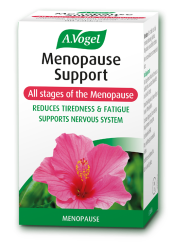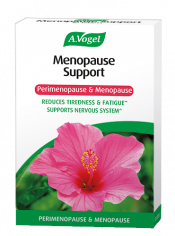Benefits of deep breathing
So, are you looking for a quick fix, something that could help on the spot? If so, then practicing slow, structured breathing can be quite fantastic.
Everybody can do it. You can practice it on a daily basis, and it can become part of your immediate response for coping with symptoms such as hot flushes and anxiety, as well as helping manage other issues that can arise during perimenopause and menopause.
This is a self-care technique that I recommend a lot. It’s probably the thing I recommend most after drinking plenty of water. And with good reason!
Incorporating deep breathing exercises into your daily routine can help manage symptoms and improve overall well-being. Here are some specific benefits:
1. Stress reduction and stress control
We know that in perimenopause and menopause, anxious or stressful feelings can pop up. They can just appear very suddenly, or sometimes you find them creeping up. And when you're in the stress response, you do much more shallow breathing, so you'll do quick breaths filling just the top part of the lungs. And this is really bad for you because it actually prolongs the stress response.
What deep and slow breathing can do in this situation is activate what's called the parasympathetic nervous system, and this is the calming one. So, if you're in a state of anxiety and stress and you click on the parasympathetic nervous system, it switches everything to relaxation mode. So, this is a really lovely one to get out of the anxiety and stress mode very, very quickly, doing something that's going to make you relax and feel much more in control.
This is a fabulous one for those of you that tend to experience panic attacks that come out of nowhere, or you might feel that they're just boiling up over a few minutes.
2. Improved sleep
Deep breathing is a good technique to use if you are experiencing sleep problems in perimenopause and menopause such as getting to sleep and staying asleep.
So, this exercise can be done when you get into bed. Rather than counting sheep to try and get you off to sleep, you can take slow, deep breaths. It's going to relax you. It's going to promote a better, deeper, longer sleep as well, which is absolutely fantastic.
3. Hot flush and night sweat management
Very often, hot flushes and night sweats can be triggered by your nervous system going into overdrive or being triggered by something. So, if you feel a hot flush coming on, and sometimes they can take a minute or two before they really strike, this is the point where you can practice slow, deep breathing. This will help you to override that nervous response. You're going to be calmer.
And when you're calmer, you're less likely to get a full hot flush or night sweat. And this deep breathing can actually help to reduce the intensity, and also the frequency, of hot flushes and sweats.
4. Mood regulation and emotional well-being
Deep breathing can be a mood regulator. It's great for your emotional well-being during perimenopause and menopause. It helps to lift you up. It helps you to feel in a better mood generally. Deep breathing can release things called endorphins. And these are chemicals that are natural mood-boosters, so you don't need tablets or anything to help, just the deep breathing can get that whole positive process moving.
5. Enhanced lung function
Better breathing can improve lung function. And there are lots of different things that can affect lung function in perimenopause and menopause: our lung capacity can decrease; we can end up getting things like breathlessness and wheeziness, and breathing shallowly. So, better breathing is going to help to improve lung capacity, which will also help when you are exercising.
6. Helps heart health
It can also help your heart health because stress and anxiety can raise blood pressure. So, if you're doing the deep breathing, if you're more often in a relaxed state, that can help prevent high blood pressure, as well as helping to reduce your heart rate. This is a really important one because, unfortunately, post-menopausal women are much more prone to things like heart disease and heart attacks.
7. Improves cognitive function
Deep breathing can actually help cognitive function. And I know, at the moment, I'm getting so many of you contacting me about your issues with brain fog, with memory, with poor recollection; and, very often, it's just lack of oxygen. Deep breathing is going to help, especially when you get to that point in the day where you find that you're getting the foggy brain or you're getting really tired.
Fatigue is another issue. If you're not breathing deeply enough, you're not going to get oxygen around the body, and you're going to feel tired generally. So, this is a great one for improving brain function, as well as countering fatigue and energy dips in the afternoon.
Breathing techniques
There are lots of different ones you can choose from. Maybe go on to YouTube and have a look at some of the breathing exercises.
The really important thing here is you have to practice every day. It has to get to the point where you don't even have to think about doing it. You're in a situation, you feel a hot flush coming on, and immediately, you're into the deep breathing.
So, try to practice this at least once a day. You can do it when you're watching the TV, if you're waiting for the bus, or if you're doing something that doesn't involve a lot of concentration and focus.
Remember to do it somewhere quiet so that you're not being disturbed halfway through. And good posture is really important. If you're slumped over, your lungs can't actually move very far at all. So, when you're practising deep breathing, definitely sit up, shoulders back, and that can make a huge difference.
How to do the square breathing technique
One of the really nice breathing techniques is the 4 x 4 breathing technique, also known as Square Breathing or Box Breathing. This method can be so effective, it's even used in a lot of organisations where people are under a huge amount of stress (such as athletes, police officers, and nurses), and even by the US Navy SEALs; so, it's certainly got a great list of endorsements.
It's really simple, all you need to do is breathe in very, very slowly, counting 1,2,3,4. You hold your breath for a count of four, and then you slowly exhale for a count of four, and then you hold the breath or the empty lungs for a count of four. Then just do that a few times.

You may find, to start with, you get a little bit dizzy with this, especially if your lungs are not used to being filled right up with oxygen. If you do, just stop, and then when everything's okay, just start again. Maybe you can only do one or two rounds to start with. But, as I said, you want to get to the point where you can bring this in really, really quickly without even thinking, and it can make a huge difference.
So, I hope you found this one helpful. I know it's something that I use, one way or another, on a regular basis just to help me focus, and cope, and not have a lot of stress and anxiety. If any of you out there have used any particular breathing techniques that you have found really helpful, then please share your stories with us. I'd love to read them all.
Until next time, take care.








